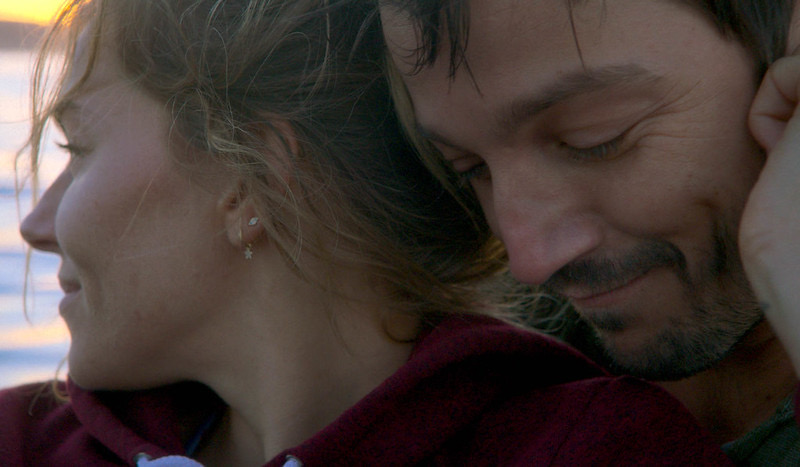‘Wander Darkly’ Navigates A Time Bending Romance
Sienna Miller and Diego Luna star appear in “Wander Darkly” by Tara Miele, an official selection of the U.S. Dramatic Competition at the 2020 Sundance Film Festival. (Courtesy of Sundance Institute)
January 30, 2020
Warning: Contains spoilers for “Wander Darkly”
Relationships are built on moments in time – sequences of mundane and joyful events that subtly build upon each other to form a bond. In “Wander Darkly,” director and writer Tara Miele breaks down the timeline of a relationship and a singular, tragic event that changes everything.
Miele‘s first feature film since 2014, “Wander Darkly” opens after Adrienne (Sienna Miller) and Matteo (Diego Luna) welcome their first child into the world. Despite this life-changing event and the purchase of a new home, both are miserable. Their relationship is beginning to crumble due to misplaced jealousies and an overwhelming feeling that they’re a mismatched pair. To avoid the expense of couples therapy, Adrienne and Matteo settle for a free date night — a casual party at a friend’s home that only reminds them of their problems. Immediately after, their lives are changed forever by a sudden, severe car accident
The official synopsis of the film has obscured what happens after a disoriented, bloodied Adrienne wakes in the hospital. Needless to say, a sequence of events throws off everything she and Matteo understand of their reality and relationship. Convinced she is dead, Adrienne desperately attempts to set things right by holding onto hope for the future of Matteo and their daughter.
The plot is portrayed with an elastic timeline stretching back and forth between the past, present and future as Adrienne’s grasp on reality weakens. Miele’s influences are clearly represented, with nods to “If I Stay,” “Ghost” and, arguably, “Inception.” But, it’s Miele’s spin on Michael Gondry’s “Eternal Sunshine of the Spotless Mind” that is her most creative construct – shown through Adrienne and Matteo’s metaphysical travels into their memories as they try to explain them to each other. While the pair work to figure out what went wrong in the relationship, their individual memories clash as their pain has clouded the past.
Miller and Luna are exceptional as detached but semi-present lovers in “Wander Darkly.” Their (sometimes) warm chemistry is completely convincing — a difficult feat given the film’s elastic narrative. Miller effectively conveys Adrienne’s heartbreak and pain in a way that makes you want to reach through the screen to comfort her. Luna’s portrayal of Matteo is comedic, flirtatious and charming – he grounds the film as Miller slips further into disorientation.
Miele has crafted a beautiful, intriguing and ethereal film with many fascinating ideas, but she’s asking a lot from the audience. As “Wander Darkly” continues on, the timelines become looser and less coherent – it’s a challenge to keep up with the narrative. With bigger time jumps and odd dialogue, I felt myself losing a sense of the film’s grounding and I was looking for something to tether myself to.
The final moments of “Wander Darkly” build to a satisfying, emotionally resonant, gut-wrenching ending. Miele bounces back to the films earlier moments and unfastens some of the more ambitious ideas, and opts for a more conventional conclusion — leaving the film on steady ground.
Overall, I would give “Wander Darkly” a 7 out of 10 and would recommend it to fans of cinema that blurs genre lines.








